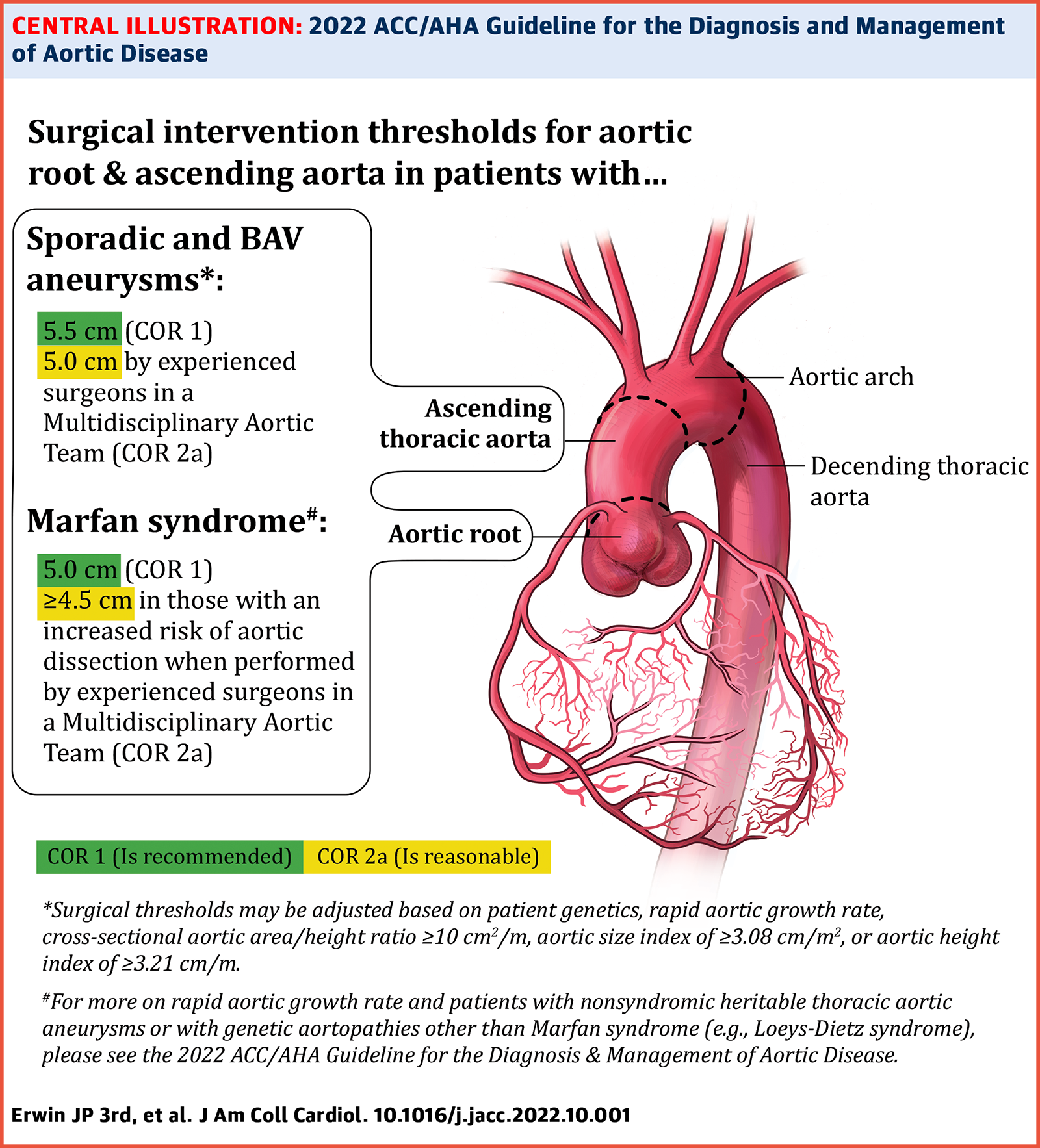New ACC/AHA Guideline Address Diagnosis, Management of Aortic Disease
The newest clinical guideline from the ACC and the American Heart Association aims to guide clinicians in the diagnosis and management of patients with aortic disease. Specifically, the 2022 ACC/AHA Guideline for the Diagnosis and Management of Aortic Disease provides recommendations regarding diagnosis, genetic evaluation and family screening, medical therapy, endovascular and surgical treatment, and long-term surveillance across multiple clinical presentation subsets, ranging from asymptomatic patients to those with acute aortic syndromes.
Among the highlights, the guideline encourages the use of centers with Multidisciplinary Aortic Teams in determining the appropriate timing of intervention. There is also added emphasis on the role of shared decision-making, especially in the management of patients with aortic disease both before and during pregnancy due to the "cardiovascular risks of pregnancy, the diameter thresholds for prophylactic aortic surgery, and the mode of delivery."
In terms of computed tomography, magnetic resonance imaging and echocardiographic imaging of patients with aortic disease, the guideline authors suggest clinicians follow recommended approaches for image acquisition, measurement and reporting of relevant aortic dimensions, and the frequency of surveillance before and after intervention.
At centers with Multidisciplinary Aortic Teams and experienced surgeons, the guideline lowers the threshold for surgical intervention for sporadic aortic root and ascending aortic aneurysms from 5.5 cm to 5.0 cm in selected patients. This threshold is even lower in specific scenarios among patients with heritable thoracic aortic aneurysms. Additionally, in patients who are significantly smaller or taller than average, the guideline recommends that surgical thresholds "may incorporate indexing of the aortic root or ascending aortic diameter to either patient body surface area or height, or aortic cross-sectional area to patient height."
The guideline also defines rapid aortic root growth or ascending aortic aneurysm growth and provides guidance on when to use genetic screening and when valve-sparing aortic root replacement is reasonable. It also discusses the increasing role for thoracic endovascular aortic repair in the management of uncomplicated type B aortic dissection.
"Most of the current recommendations for patients with aortic disease are based on expert opinion and data from observational studies, large registries, and prospective studies, but few are from randomized clinical trials," according to the Writing Group, chaired by Eric M. Isselbacher, MD, MSc, FACC, and Vice Chairs Ourania Preventza, MD, MBA, and James Hamilton Black III, MD, DFSVS. "More data are needed from basic science studies and [randomized controlled trials] to guide prevention, early diagnosis, and advanced treatment for aortic disease."
They add that "in the future, precision medicine and patient-centered approaches will enable clinicians to develop care plans to optimize outcomes for each patient." They also stress the importance of including diverse populations and examining race, ethnicity, and sex differences in future research "to ensure that all patient groups are represented and that questions pertinent to their aortic health are answered."
The guideline was published Nov. 2 in the Journal of the American College of Cardiology. To access clinician and patient tools related to the Guideline, visit ACC's Aortic Disease Guideline Hub.
Clinical Topics: Cardiac Surgery, Congenital Heart Disease and Pediatric Cardiology, Invasive Cardiovascular Angiography and Intervention, Noninvasive Imaging, Valvular Heart Disease, Vascular Medicine, Aortic Surgery, Cardiac Surgery and CHD and Pediatrics, Cardiac Surgery and VHD, Congenital Heart Disease, CHD and Pediatrics and Imaging, CHD and Pediatrics and Interventions, Interventions and Imaging, Interventions and Structural Heart Disease, Interventions and Vascular Medicine, Angiography, Computed Tomography, Magnetic Resonance Imaging, Nuclear Imaging
Keywords: Aortic Aneurysm, Aortic Aneurysm, Thoracic, Aortic Rupture, Aortic Valve, Aortic Valve Disease, Aortic Valve Stenosis, Heart Valve Diseases, Aortitis, Arterial Occlusive Diseases, Bicuspid Aortic Valve Disease, Diagnostic Imaging, Magnetic Resonance Angiography, Magnetic Resonance Imaging, Interventional, Magnetic Resonance Imaging, Practice Guideline, Tomography, Emission-Computed
< Back to Listings

